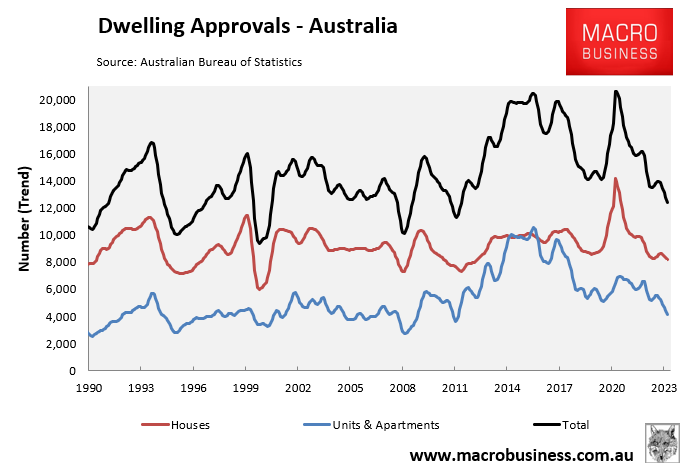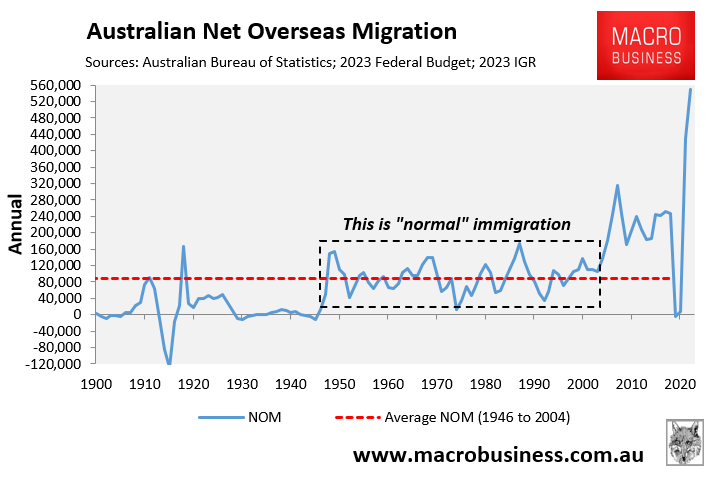Domain has released its Rental Report for March, which delivered more bad news for tenants.
Australia’s rental market experienced a resurgence in rental growth in the first quarter of 2024, resulting in new record asking rents.
Combined capital city house rents rose 5% (or $30) during the quarter, the largest quarterly increase in 17 years and the second-highest on record.

Source: Domain
“The supply-demand imbalance is still clearly placing pressure on rents”, Domain notes.
“The reacceleration of combined capital house-rental growth may not just be the typical seasonally strong period, as annual gains have momentum and quarterly growth is about a third higher than the March quarter of 2023”.
Combined capital unit rents rose for a record 11th straight quarter by 3.3% or $20, which was around four times faster than the prior quarter.
However, unit rental growth is losing momentum. It rose three times slower than in the March quarter of 2023, and yearly gains are the lowest since June 2022.

Source: Domain
“The quarterly rental gains are consistent with a record-low vacancy rate nationally (driven by the capital cities rather than regionals), with Sydney, Melbourne and Perth at record lows and Adelaide and Brisbane close to their lows”, Domain notes.
“To shift conditions away from landlords and into a balanced market (a vacancy rate of 2-3%), Australia needs between 40,000 and 70,000 rentals”.
The only positive is that Domain believes that the rental market has reached a “tipping point” and that vacancy rates and rental inflation will soon ease:
“Currently, we are seeing the number of prospective tenants per rental listing ease, suggesting some pressure has been lifted. This could be an early indicator of an increase in vacancy rates sometime this year”.
“Also, international student visa applications have turned a corner and started to fall for the first time in more than two years,(1) population growth is likely to have peaked, and the federal government has introduced a migration strategy (2) that will slow population growth”.
It is hard to be too optimistic when dwelling supply is collapsing, as indicated by the latest approvals data from the Australian Bureau of Statistics:

In February, only 12,400 homes were approved for construction in trend terms, the lowest monthly reading since April 2012.
On that run rate, Australia would only build 149,000 homes a year, 91,000 below the Albanese government’s construction target of 240,000 homes a year.
With net overseas migration forecast to remain historically high, albeit lower than last year, Australia’s rental crisis will continue, even if vacancy rates and rental inflation ease a little.
As a result, more Australians will be plunged into rental stress, group housing, or homelessness.
The solution is to cut net overseas migration hard to a level well below the nation’s capacity to build homes and infrastructure.


